
Jackson Pollock, Cathedral, 1947
1. Abstract Expressionism & Clement Greenberg:
- Self-definition and self-critique (this is what prevents modernist art from becoming mere entertainment).
- 3 unique features of painting;
- Two-dimensionality,
- The rectangular shape of the support,
- The properties of pigment.
- But many artists come to feel trapped by a reductive prescription of painting.
2. Pop Art
- Interested in the relation between art and commercial culture.
- Interested in obvious and banal imagery.
- Interested in the clash between high and low culture.
- Debate about whether Pop art was a celebration of consumer culture, or a critique of it.

Claes Oldenburg, 7-Up Sign, 1961
3. Fluxus
- Fluxus aimed at overcoming the distinction between art and life, sense and nonsense, object and event.
- Music, rather than painting, was taken as the model for artist creation.
- Many Fluxus works depended on the activity of the audience to exist. This is quite unlike Greenberg’s notion that each art from should become autonomous.
- In the Fluxus Manifesto flux is 3 meanings:
- Purging ( it is anit-art)
- Flooding (promoting new forms)
- Fusing (art and life)

George Maciunas, Fluxkit, 1964-5
Minimalism
- To examine Judd’s and Morris’s ideas
- To look at gestalt psychology and phenomenology as interpretative strategies
- To identify the main features of minimalism
- To discuss gender in relation to minimalism
- To investigate has post-minimalist arists developed minimalist ideas
- To consider the significance of minimalism in contemporary art
Who were the minimalists?
- Everyone agrees on 5 names:
- Donald Judd
- Carl Andre
- Sol LeWitt
- Robert Morris
- Dan Flavin
This slideshow requires JavaScript.
There are also a number of artists who are sometimes describes as minimalists:
- Frank Stella
- Anne Truitt
- Tony Smith
What is wrong with painting (according to Judd):

Barnett Newman, Vir Heroivus Sublimis, 1950-1
- Rectangularity
- Oil paint & canvas
- Pictorial space

Frank Stella, Six Mile Bottom, 1960
- ‘My painting is based on the fact that only what can be see there is there. All I want anyone to get out of my paintings and all I can get put them is the fact that you see the whole idea without any confusion (..) What you see is what you see.’ Frank Stella, ArtNews 65, September 1966.
- ‘The shapes, the unity, order projection and color are specific, aggressive and powerful.’ Donald Judd, Specific Objects, 1965.
- ‘A painting isn’t an image.’ Donald Judd, Specific Objects, 1965.

Working Title/Artist: BeccaDepartment: Modern and Contemporary ArtCulture/Period/Location: HB/TOA Date Code: Working Date: 1965 Digital Photo File Name: DT2645.TIF Online Publications Edited By Steven Paneccasio for TOAH 3/10/14
(Left) David Smith, Becca, 1965. (Right) Louise Nevelson, The Tropical Gardens, 1957.
What is wrong with sculpture (according to Judd):
Conventional modernist sculpture:
- is made bit by bit
- is made only wood and metal
- lacks colour

Donald Judd, Untitled, 1965
What is a ‘specific object’?
- one thing rather than a relation between parts
- fabricated not crafted
- commercial/industrial materials, not ‘art’ materials
- integral, not applied colour
- the junction between planes and between materials become the primary focus of attention. (Judd doesn’t actually say this, but it is implied in his practice.)

Carl Andre, Equivalent VIII, 1966
“In the three-dimensional work the whole thing is made according to complex purposes, and these are not scattered but asserted by one form.” Donald Judd, Specific Objects, 1965
- Does Andre’s work suggest ‘complex purposes’?
- Does the work suggest an idea? if so, what is it?
“I don’t start with an idea or concept or a drawing or anything like that, I have to start with a set of physical realities that I order in a way which I find satisfying to me. So I have to go and, as I said, the open end of my work is scavenging; just walking through the streets of the city and coming upon construction sites and finding groups of material and taking them. And often I have these groups sitting on the floor and I try to figure out what is the sort of the just combination of these pieces.” Carl Andre, 1972.
Robert Morris, ‘Notes on Sculpture’, Art Forum, February, 1966.
What does Morris say is the difference between painting and sculpture?
- Painting is illusionistic; sculpture is literal
- Painting is optical, sculpture is tactile
What are the unique features of sculpture?
- shape
- simplicity
- wholeness
- openness
- extendibility
- accessibility
- publicness
- repeatability
- equanimity
- directness
- immediacy
What is intimacy in sculpture, and why is Morris so against it?
- An intimate sculpture carries all its space within itself
- In an intimate sculpture the details of texture and construction become significant
- In an intimate sculpture the quality the finish matters
- An intimate sculpture is private, not public- it ‘tends to eliminate the viewer’
- ‘In (…) these sculptures, an eye-level examination of the work alters the scale of miniaturization first perceived by the viewer. The vastness of the empty piazza and the anonymity of the figures are revealed by such close-up scrutiny.’ Elizabeth Childs, Guggenheim website.
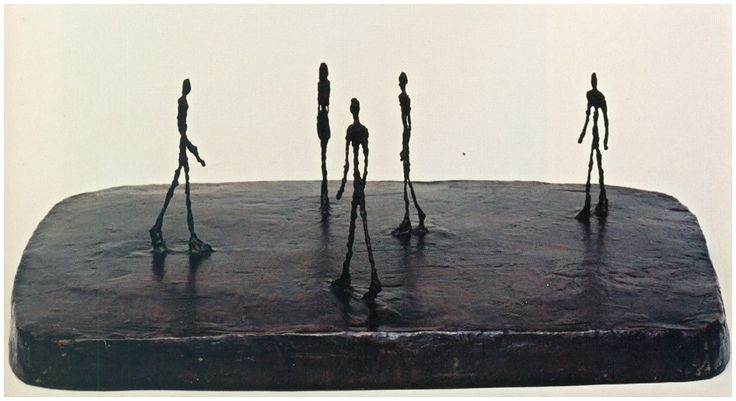
Alberto Giacometti, Piazza, 1947-9
What is ‘gestalt’ and Why is Morris interested in it?
- Literally, ‘gestalt’ means ‘form’ or ‘shape’.
- Gestalt psychology is a theory that attempts to explain how we perceive the world.
- In Morris’s essay gestalts are presented as the basic forms of perception. Because they are the most basic, Morris implies (but does not quite say) that gestalts are the purest forms of perception.
- Critics and viewers worried that there was not enough to look at in minimalist work. Morris used the idea of gestalt to claim that minimalist work offers a vision of wholeness.

Robert Morris, Untitled (Slab), 1964
Features of gestalt psychology or perception:
- reification
- multi-stability
- grouping: similarity
- grouping: proximity
- grouping: closure
- emergence
Minimalism and Phenomenology:
- ‘The object is but one of the terms in the newer aesthetic. It is in some way ore reflexive because one’s awareness of oneself existing in the same space as the work is stronger than in previous work.’ Robert Morris, Notes on Sculpture, 1966.
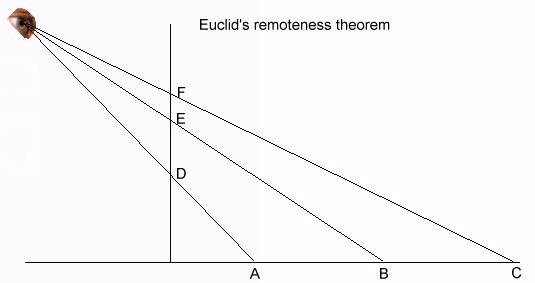
Geometrical diagram showing point of observation (form Wikipedia)
Vision is often conceived as disembodied. Phenomenology stresses the role of the entire sensing body. It argues that we understand out environment in relation to our bodies rather than in terms of abstract qualities. The experience that art offers is more important than its meaning.
‘The awareness of scale in a function of the comparison made between (…) one’s body size, and the object.’ Robert Morris, Notes on Sculpture, 1966.
Richard Serra, Backdoor Pipeline, 2010
6 Features of Minimalism:
1. Simplicity (gestalt)

Donald Judd, Untitled, 1969
- ‘minimalist work complicates the purity of conception with the contingency of perception’ Hal Foster, The Return of the Real, 1996.
- ‘the known constant and the perceived variable’ Robert Morris, Notes on Sculpture, 1966.
2. Scale
Q: Why didn’t you make it larger so that it would loom over the observer?
A: I was not making a monument.
Q: Then why didn’t you make it smaller so that the observer could see over the top?
A: I was not making an object.
Tony Smith in Robert Morris, Notes on Sculpture, 1966
Tony Smith, Die, 1962
3. Repetition
- ‘The order is not rationalistic and underlying but is simply order, like that of continuity, one thing after anther.’ Donald Judd, Specific Objects, 1965.

Carl Andre, Zinc Steel Plain, 1969
- Although it looks like a recognisable object, Uccello’s drawing is not really about observed reality (look at the vertical line that runs from top to bottom).
- Each unit on the circumference of the chalice is identical. Uccello is fascinated by the way repetition produces differences.
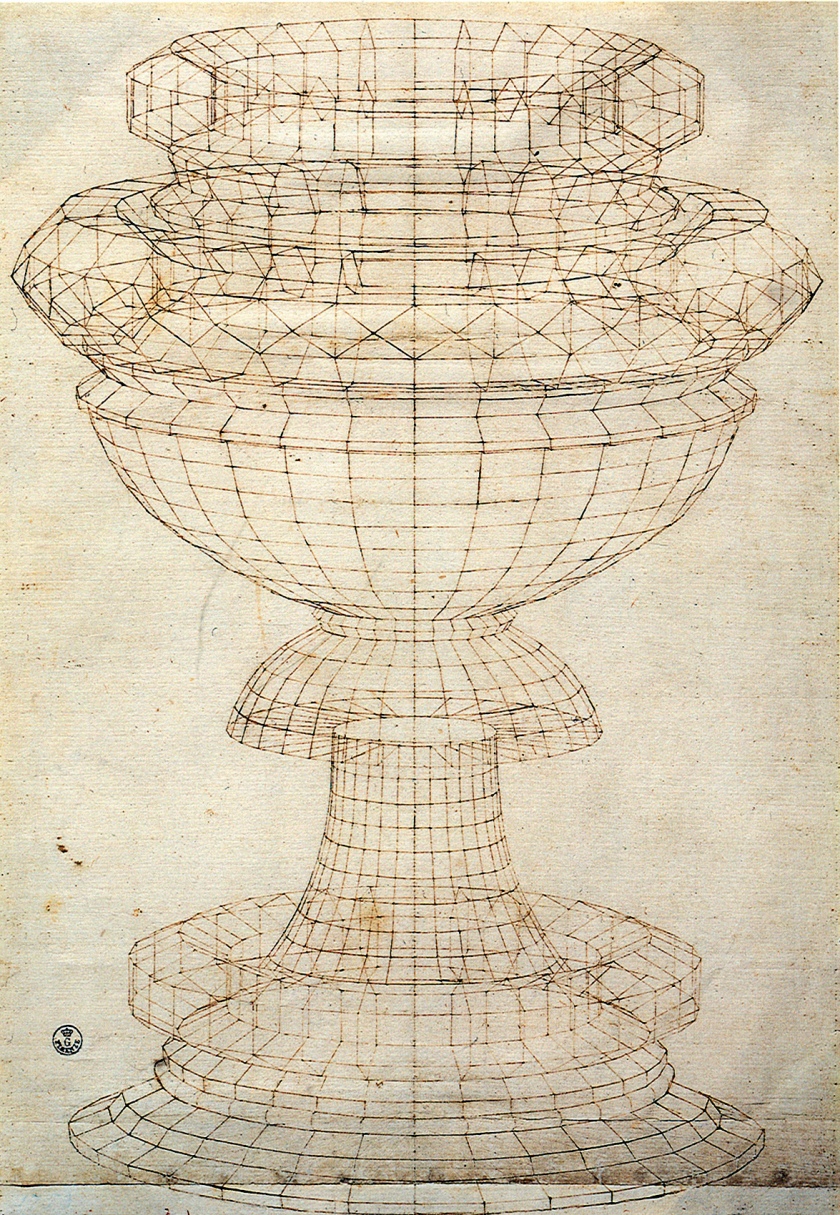
Paolo Uccello, Chalice, c.1450
4. Gravity

Robert Morris, L-Beams, 1967
5. Systems

Sol LeWitt, 1 2 3 2 1 (Cross), 1980
6. Colour
- Do colour and pattern reinforce one another?
- How many colours are there?

Frank Stella, Hyena Stomp, 1962
Minimalism and Gender:
- On the surface, minimalism wouldn’t seem to have any interest in gender as the objects it makes are so bare of any kind of figurative reference. However, this piece by Robert Morris suggests otherwise. The ‘I’ that forms the lid of the box reefers to the notion of self, but it is also like a steel I-beam, suggesting a link between masculinity, minimalism, and industrialisation.

Robert Morris, I-Box, 1962


Sol Lewitt, Schematic Drawing for Muybridge II, 1964/1970
- Even Sol Lewitt, whose work is normally austere and cerebral, made works about sex and gender. Muybridge II was a long rectangular box with 10 peepholes. Inside the peepholes the figure of a naked woman can be seen in increasing close-up. Vision is here associated with a kind of sexual power or domination. (Muybridge was a 19th Century photographer whose works analyse movement, but also power over their subjects.)

Eadweard Muybridge, A Woman Getting into Bed, 1887
- David Batchelor talks about this work (Eva Hesse) as a metaphor for the human body. It has an inside and an outside (in contrast to many minimalist works which are all exterior). The inside and outside are integrated (by the little rubber tubes pushed though the holes in the steel mesh) but each offers a quite different experience.
 Eva Hesse, Accession II, 1969
Eva Hesse, Accession II, 1969
- Greenberg supported Truitt’s work, which annoyed the minimalist. He suggested that she had ‘invented’ minimalism before them, and that their work was derivative.
- The surface of her objects are always hand painted (not industrially fabricated). This enabled Greenberg to defend her work as a form of extended painting, rather than strictly sculpture.
- He also stoked the gender debate by claiming that her work was ‘truly’ feminine whereas theirs was exaggeratedly and artificially masculine.

Anne Truitt, Primrose, 1962
What reasons might there be for thinking of Truitt’s work as minimalist?
And what reasons for thinking of it as non-minimalist?
Features of Post-minimalism:
1. Gestalt?

Robert Smithson Non-Site (Essen) 1969
Do you see a pile of rubble (as a gestalt)?
- Gestalt means ‘form’ or ‘shape’ and there is a simple form to this arrangement even if it is dirt placed with mirrors.
2. Chance
Why go to the bother of arranging stuff, if its just as interesting to chuck it on the floor?

Carl Andre, Spill (Scatter Piece), 1966
3. Formlessness
- This is made of cut felt, Morris is interested in the way that the form of the piece is beyond control.
- This is something a number of artists become interested in.

Robert Morris, Untitled, 1968 (2008)
- The work is formed of strings of latex. Hesse follows a process without knowing exactly what the end result will be. The sensuous qualities of the material are allowed to dominate the visual form.
- You could also look at this work as a response to Pollock’s drip paintings.

Eva Hesse, Right After, 1969
- This work is made from polyurethane paints. Once it dries it can be lifted from the floor like a mat. It is a form of painting that is free of the constraints that Judd identifies.

Lynda Benglis, Contraband, 1969
4. Softness
- This is like a standard repetitive minimalist work, with identical cylinders. However, because the cylinders are made of latex each one becomes individual. Once again, the material is used to over-ride the system.

Eva Hesse, Repetition Nineteen III, 1968
5. Drama
- These objects are very heavy and are kept n place by gravity alone- no welding or fixing.
(Left) Richard Serra, Prop, 1968. (Right) Richard Serra, One Ton Prop (House of Cards), 1969
6. Monumentality
Richard Serra, Tilted Arc, 1981-9
Contemporary art & minimalism:
- These are not minimalist works, but each in its own way is related to some of the concerns of minimalist artists.
(Left) Rachel Whiteread, Ghost, 1990, (Right) Damien Hirst, The Physical Impossibility of Death in the Mind of Someone Living, 1991.

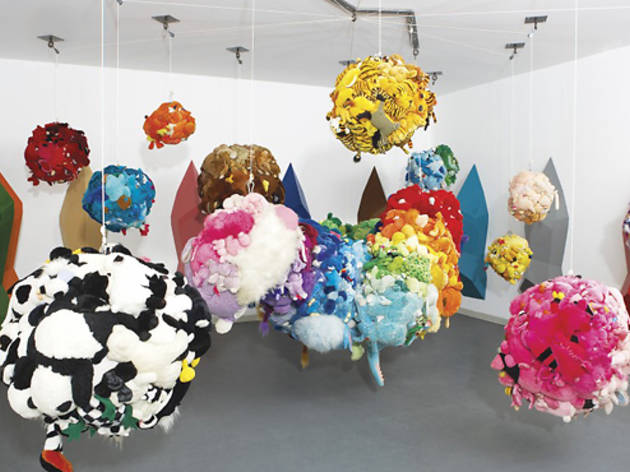












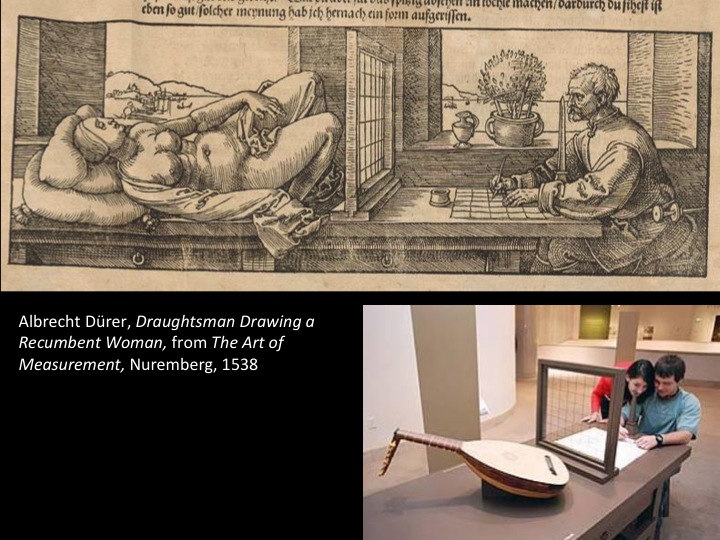










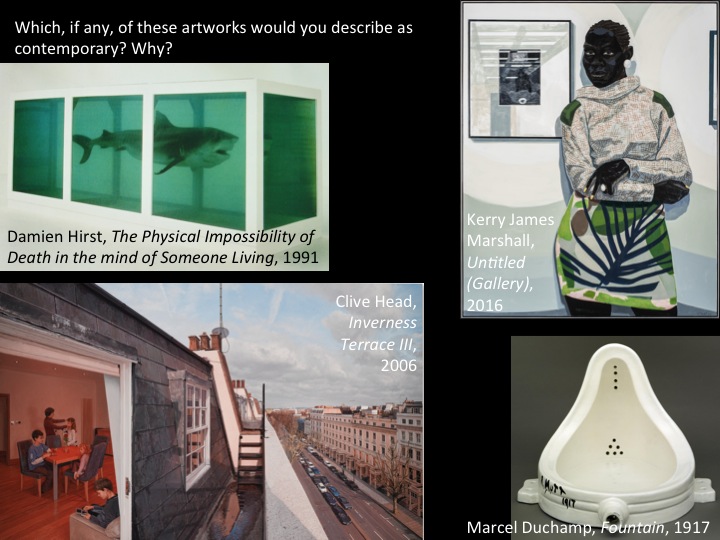








































 Eva Hesse, Accession II, 1969
Eva Hesse, Accession II, 1969





































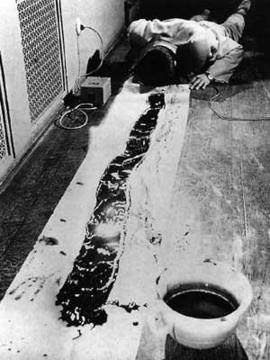

























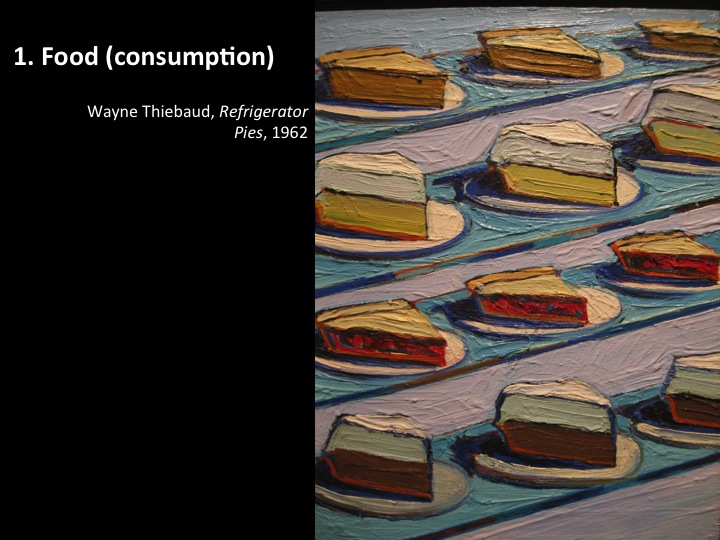




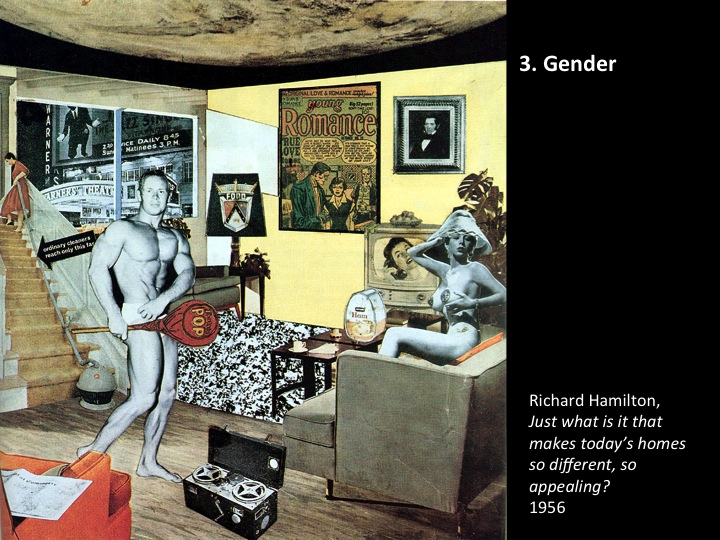



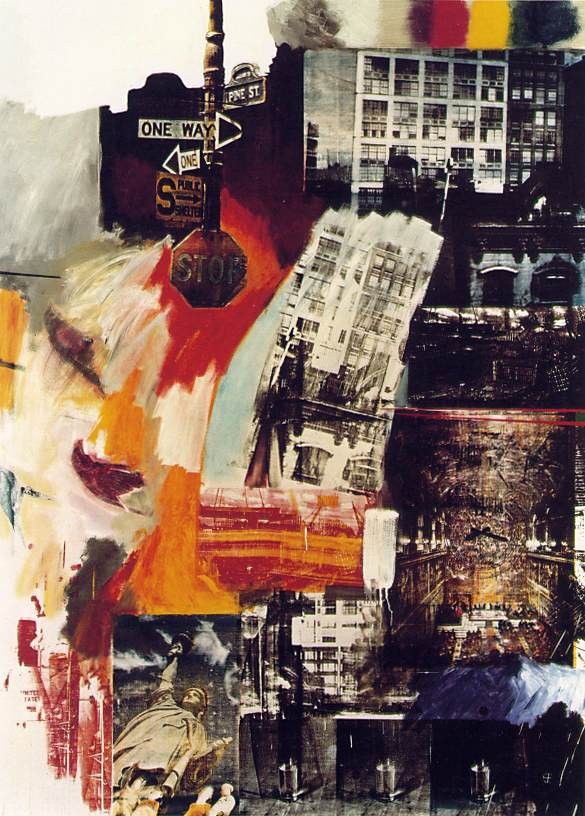













 (Marcel Duchamp, Belle Haleine, Eau de Voilette, 1921)
(Marcel Duchamp, Belle Haleine, Eau de Voilette, 1921)

